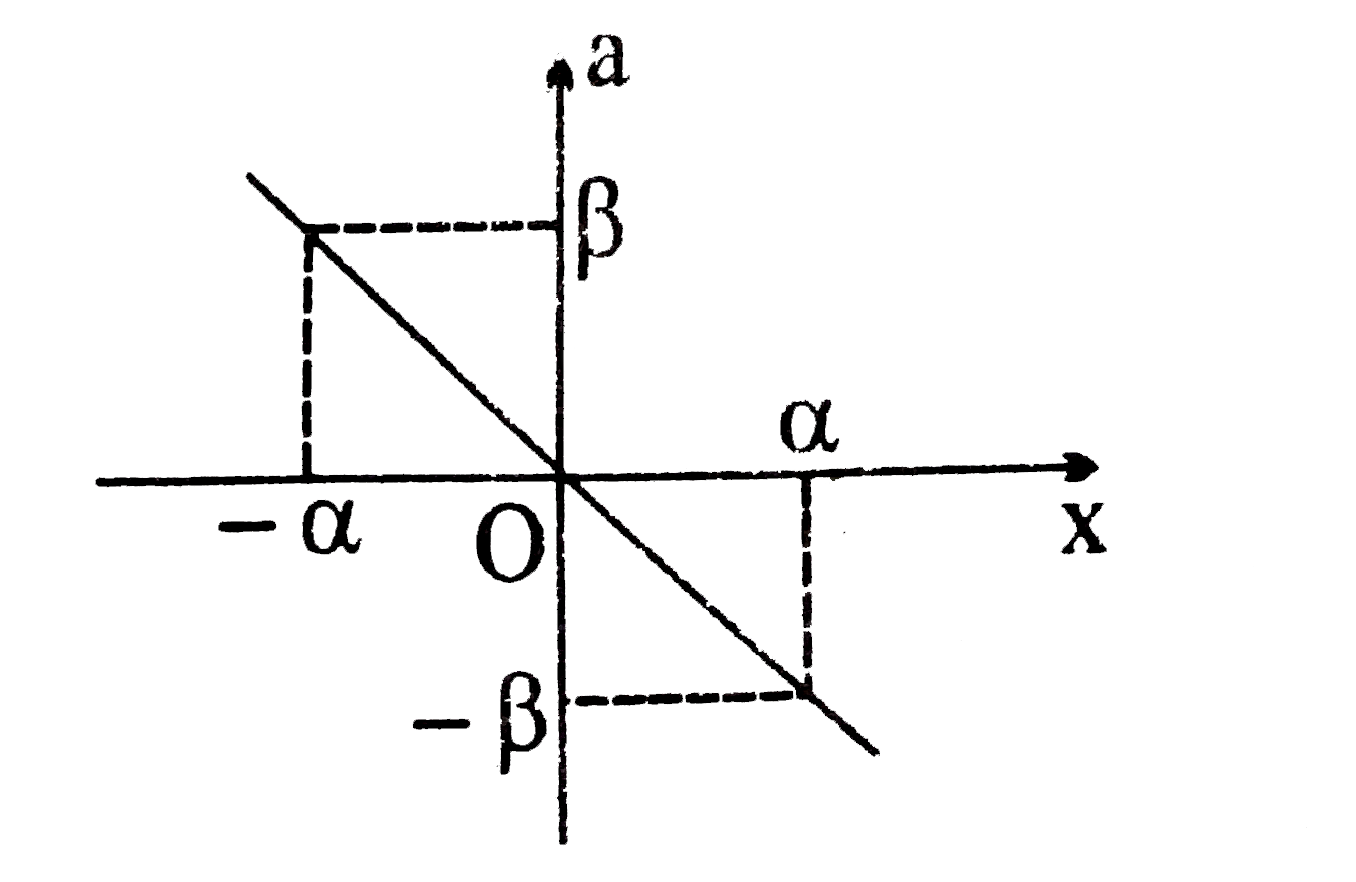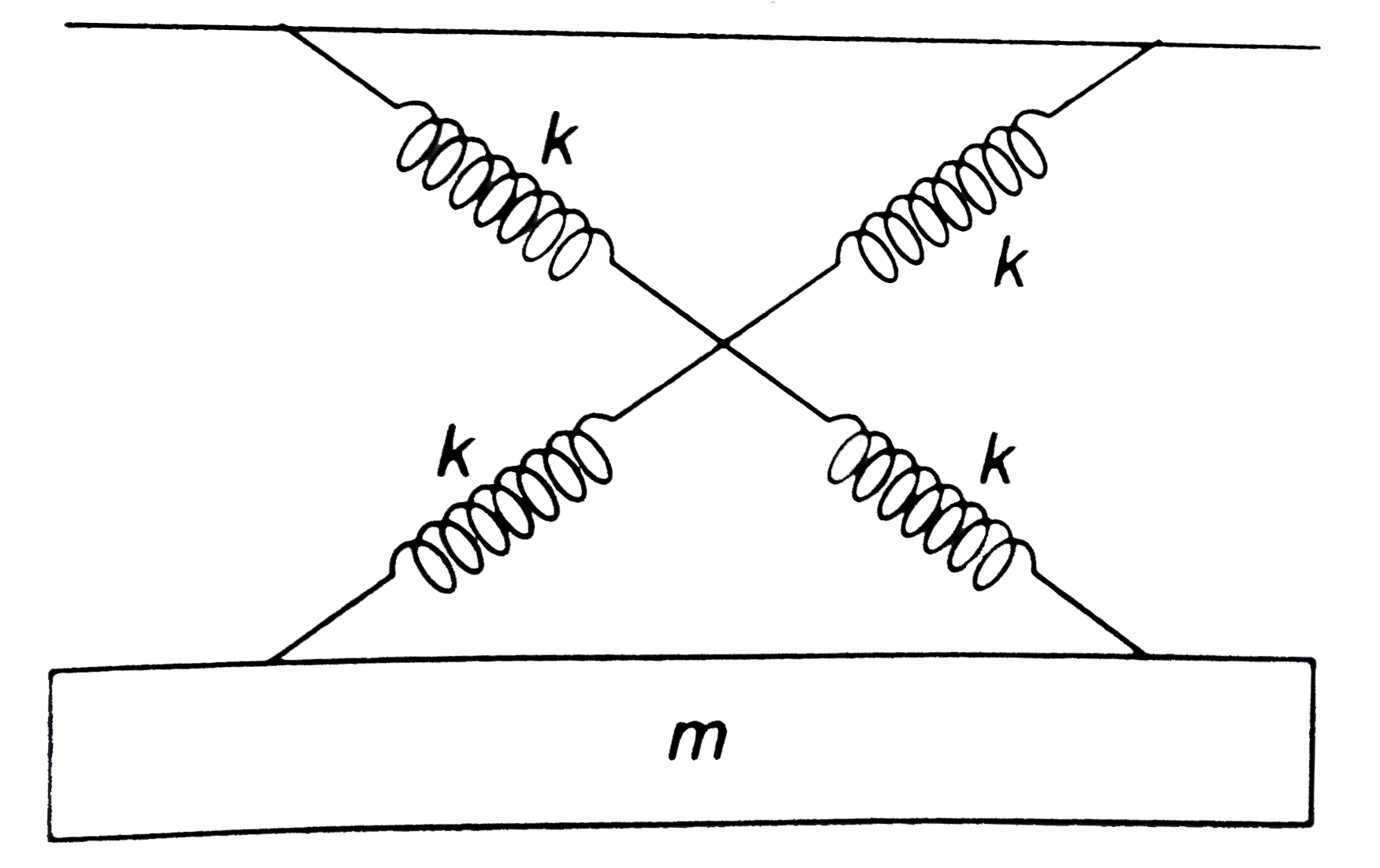A body executing simple harmonic motion makes 120 oscillations in one minute. Calculate (i) period (ii) frequency and (iii) angular frequency.
To solve the problem step by step, we will calculate the period, frequency, and angular frequency of a body executing simple harmonic motion that makes 120 oscillations in one minute.
Step 1: Calculate the Period (T)
The period (T) is defined as the time taken to complete one full oscillation.
Given:
- Total oscillations = 120
- Total time = 1 minute = 60 seconds
To find the period, we use the formula:
T=Total timeNumber of oscillations=60 seconds120
Calculating this:
T=60120=0.5 seconds
Step 2: Calculate the Frequency (f)
Frequency (f) is defined as the number of oscillations per unit time. It is the reciprocal of the period.
Using the formula:
f=1T
Substituting the value of T:
f=10.5=2 Hz
Step 3: Calculate the Angular Frequency (ω)
Angular frequency (ω) is related to the frequency by the formula:
ω=2πf
Substituting the value of f:
ω=2π×2=4π rad/s
Summary of Results
1. Period (T) = 0.5 seconds
2. Frequency (f) = 2 Hz
3. Angular Frequency (ω) = 4π rad/s
The period (T) is defined as the time taken to complete one full oscillation.
- Total oscillations = 120
- Total time = 1 minute = 60 seconds
T=Total timeNumber of oscillations=60 seconds120
T=60120=0.5 seconds
Frequency (f) is defined as the number of oscillations per unit time. It is the reciprocal of the period.
f=1T
f=10.5=2 Hz
Angular frequency (ω) is related to the frequency by the formula:
ω=2πf
ω=2π×2=4π rad/s
1. Period (T) = 0.5 seconds
2. Frequency (f) = 2 Hz
3. Angular Frequency (ω) = 4π rad/s
Topper's Solved these Questions
- OSCILLATIONS Book:ICSEChapter:OSCILLATIONS Exercise:ADDITIONAL SOLVED PROBLEMS
Explore 11 Videos
- OSCILLATIONS Book:ICSEChapter:OSCILLATIONS Exercise:SHORT ANSWER QUESTIONS WITH ANSWER
Explore 20 Videos
- MOTION IN FLUIDS Book:ICSEChapter:MOTION IN FLUIDS Exercise:SELECTED PROBLEMS (FROM POISEUILLE.S FORMULA)
Explore 19 Videos
- PROPERTIES OF MATTERBook:ICSEChapter:PROPERTIES OF MATTERExercise:MODULE 4 ( TEMPERATURE ) UNSOLVED PROBLEMS
Explore 12 Videos
Similar Questions
Knowledge Check
A particle executing simple harmonic motion with time period T. the time period with which its kinetic energy oscillates is
ATB2TC4TDT2
The position and velocity of a particle executing simple harmonic motion at t = 0 are given by 3 cm and 8cms−1 respectively . If the angular frequency of the particle is 2rad s−1 , then the amplitude of oscillation (in cm) is
View SolutionExplain (i) natural oscillation (ii) natural frequency.
View SolutionThe restoing force acting on a body executing simple harmonic motion is 16 N when the body is 4 cm away from the equilibrium position. Calculate the spring constant.
View SolutionThe acceleration-displacement (a−X) graph of a particle executing simple harmonic motion is shown in the figure. Find the frequency of oscillation.

View SolutionA particle executing simple harmonic motion of amplitude 5 cm has maximum speed of 31.4 cm / s . The frequency of its oscillation is
View SolutionAssertion : We can call circular motion also as simple harmonic motion.
Reason : Angular velocity in uniform circular motion and angular frequency in simple harmonic motion have the same meanings.
View SolutionA body of mass 4 kg is made to oscillate on a spring of force constant 10 N/m. Calculate (i) angular frequency (2) frequency of vibration and (3) time period of vibration.
View Solution


